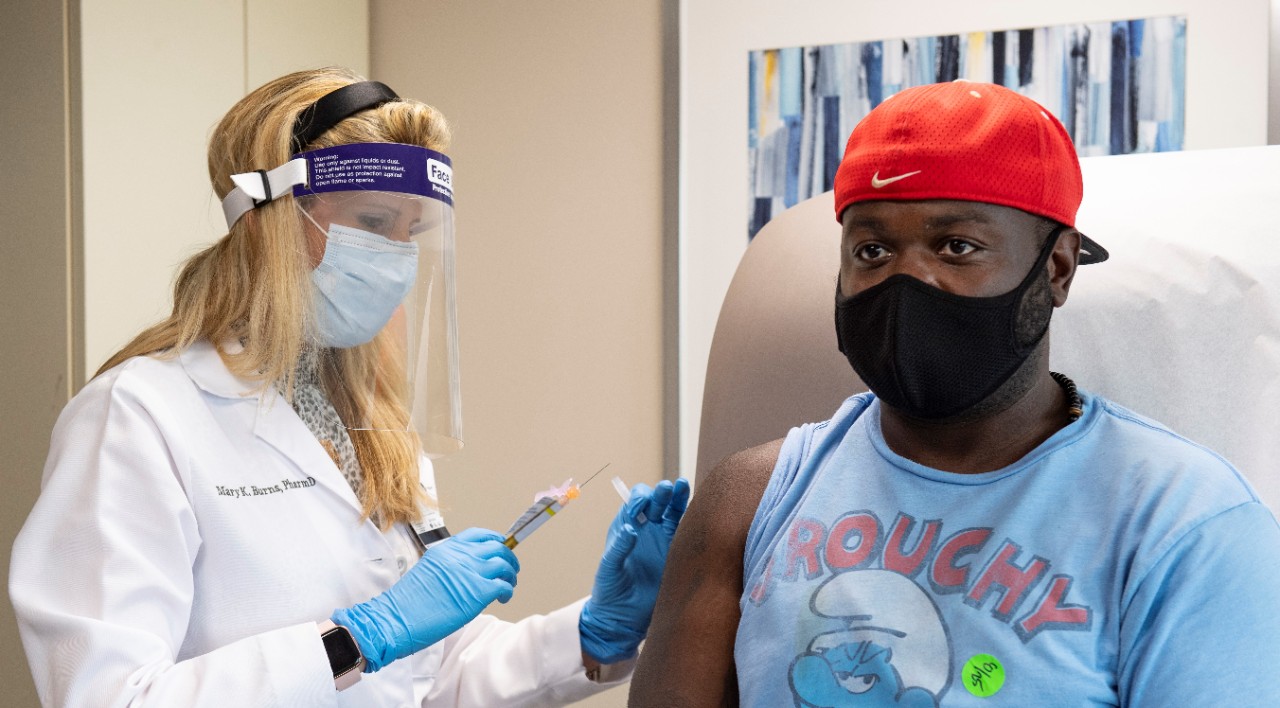
Spectrum News: Coronavirus vaccine questions, explored: How does it work, and are there side effects?
UC expert explains how the Moderna vaccine works
The development of COVID-19 vaccines is being closely watched as cases continue to spike. The Pfizer vaccine was just recently approved and is being distributed and the Moderna vaccine is expected to be approved soon as well. This news has prompted questions about what people can expect from the shots and how safe they are.
Spectrum News spoke with vaccine experts across the country to dig deeper on the most common questions about the vaccines. One of those was Carl Fichtenbaum, MD, of the Division of Infectious Diseases at the UC College of Medicine.

Carl Fichtenbaum, MD, in a lab in the UC Division of Infectious Diseases. Photo/Joe Fuqua II/UC Creative + Brand
The Pfizer and Moderna vaccines don’t involve injecting the virus itself.
“We’re not giving people the actual virus,” said Fichtenbaum, who oversaw a part of Moderna’s trial at UC. “We're giving them pieces that their body can respond to, so they can’t get COVID from that.”
According to information released by Moderna, the most common reactions to its vaccine included injection site pain, fatigue, muscle and joint pain, headache, and redness at the injection site. The company didn’t note how common those reactions were, but they did say they increased after the second dose of the vaccine.
“It doesn't mean you have COVID, it doesn't mean you have the disease,” Fichtenbaum said. “It means everything has gone right.”
Read the entire article here. Fichtenbaum was featured in a follow-up story by Spectrum News, which you can access here. He was also featured in a Cleveland.com story about vaccine side effects, which can be read here.
Lead photo of Jarelle Marshall, the first patient dosed in the UC/UC Health Moderna COVID-19 vaccine trial by Colleen Kelley/UC Creative + Brand.
Next Lives Here
The University of Cincinnati is classified as a Research 1 institution by the Carnegie Commission and is ranked in the National Science Foundation's Top-35 public research universities. UC's medical, graduate and undergraduate students and faculty investigate problems and innovate solutions with real-world impact. Next Lives Here.
Related Stories
Top six 2025 nephrology drug approvals
January 5, 2026
“2025 has been a landmark year for kidney disease therapeutics, marked by a comprehensive slate of FDA approvals covering endothelin-receptor blockade, complement inhibition, GLP-1-based metabolic protection, and B-cell-directed therapy,” Prakash Gudsoorkar, MD, associate professor of clinical medicine at the University of Cincinnati College of Medicine and staff nephrologist at UC Health, recently told MedCentral.
Weight loss drugs help, but not on their own
January 5, 2026
Millions of Americans are on one type of weight loss drug or another, and a University of Cincinnati physician says there are things to know as we enter the new year. Malti Vij, MD, adjunct associate professor in the Department of Internal Medicine and provider at UC Health Primary Care in Mason, recently spoke to 91.7 WVXU News.
News Cincinnati loved in 2025
January 2, 2026
The story of prohibition bootlegger George Remus was among WLWT's favorite segments in 2025. UC Law Professor Christopher Bryant spoke with journalist Lindsay Stone about Remus using a temporary insanity defense during a murder trial.
